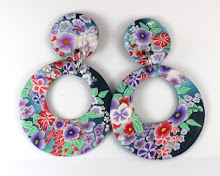Here's a fun painting project for your little one. You'll need almost any brand of acrylic paint and a pad of watercolor paper. You can buy a decent set of brushes for under $5, but if you get cheap, flimsy brushes, you child will be forever frustrated. Most catch-all kids art kits come with terrible brushes.
Of course the last thing you want to do is teach kids there's a right way to paint something. Hopefully this will just give them confidence that they CAN paint. Chose a favorite animal, and break it down into very simple shapes. Yesterday we did this with pandas and they turned out great. It's important to do two layers. For example, one solid color for a lizard shape, and then spots or stripes over the solid color. Acrylic paints dry so fast, that you can do this all in one sitting.
Watercolor paper and acrylic paint is my new favorite combo. Acrylic paint can work like watercolor if you water it down. If you buy a little thicker brand of acrylic paint, it's fun to paint on colored paper. Zebras, panda bears, penguins, swans... work better on colored card stock because the white parts of these animals would disappear on a white background.
Watercolor paper and acrylic paint is my new favorite combo. Acrylic paint can work like watercolor if you water it down. If you buy a little thicker brand of acrylic paint, it's fun to paint on colored paper. Zebras, panda bears, penguins, swans... work better on colored card stock because the white parts of these animals would disappear on a white background.




